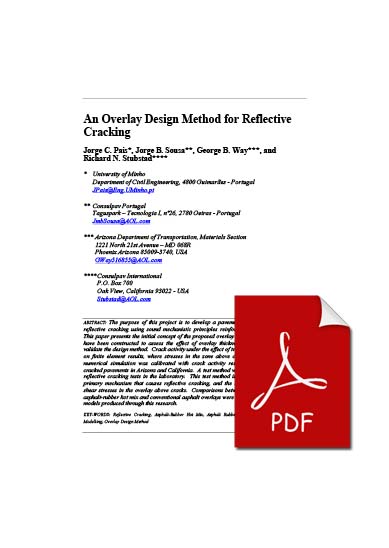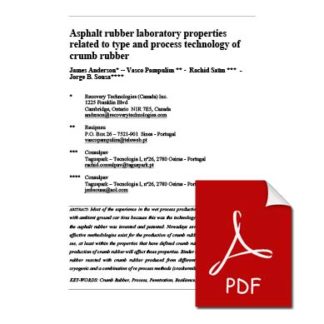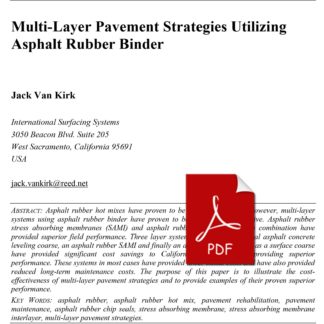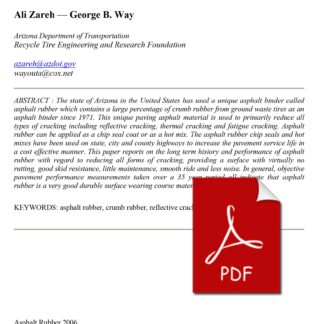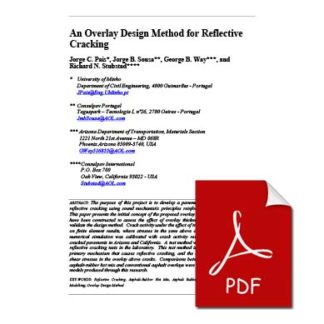Description
The purpose of this project is to develop a pavement design method to address reflective cracking using sound mechanistic principles reinforced by practical experience. This paper presents the initial concept of the proposed overlay design method. Test sections have been constructed to assess the effect of overlay thickness, crack width and load to validate the design method. Crack activity under the effect of traffic loads was initially based on finite element results, where stresses in the zone above cracks were calculated. This numerical simulation was calibrated with crack activity results measured on in-service cracked pavements in Arizona and California. A test method was then developed to perform reflective cracking tests in the laboratory. This test method is based on findings about the primary mechanism that causes reflective cracking, and the ratio between horizontal and shear stresses in the overlay above cracks. Comparisons between expected performance of asphalt-rubber hot mix and conventional asphalt overlays were made, taking into account the models produced through this research.

